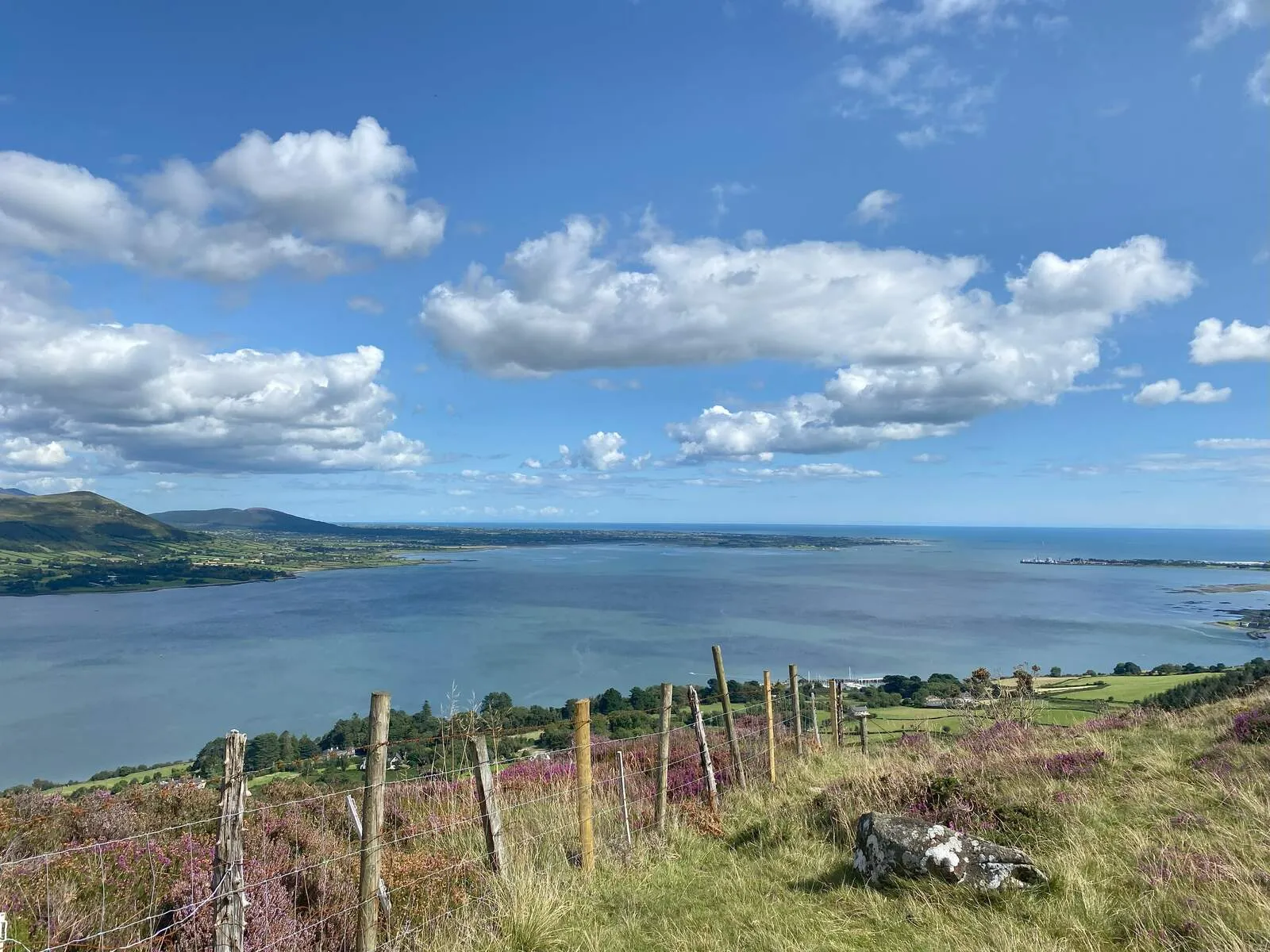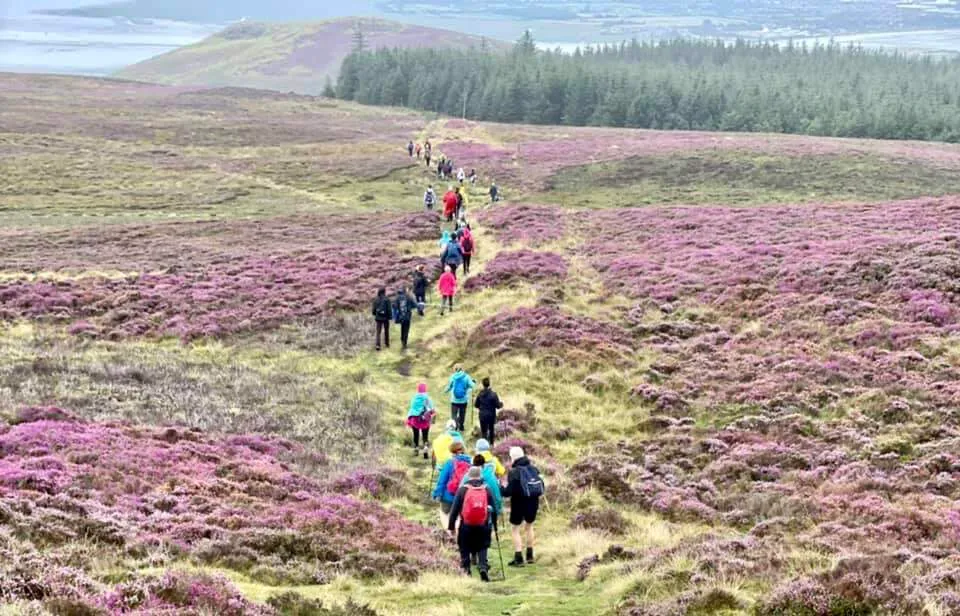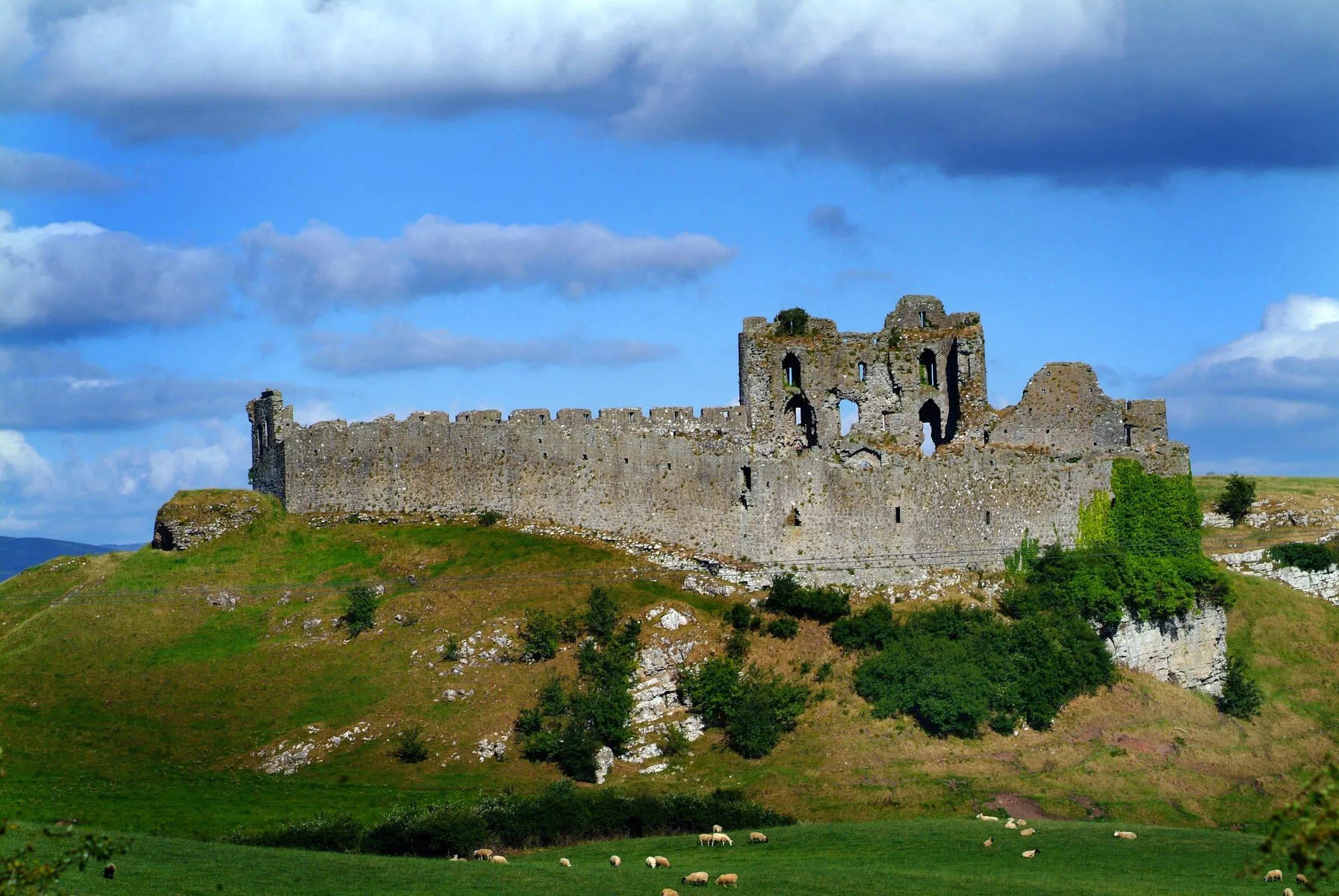Castle Roche, an imposing 13th-century Anglo-Norman fortress, rises dramatically from a rocky outcrop in County Louth, marking the contested boundary between the Gaelic province of Ulster and the English-controlled "Pale." Built in 1236 by Lady Rohesia de Verdun-a rare example of a medieval castle constructed by a woman-it stands as a testament to both strategic ambition and personal intrigue. The de Verdun family, Norman lords who arrived in Ireland in 1185, established their power here, and Rohesia, following her husband's death, fortified this site to secure her inheritance. Its position on a steep limestone promontory made it a natural bastion, while its name derives from the Norman French "roche," honoring its rocky foundation.
The castle's history intertwines with legend and conflict. Rohesia is said to have murdered her second husband, Theobald le Botiller, by pushing him from a window now known as the "Murder Window," a tale cemented in local lore. Despite this grim episode, she later became a nun and founded Grace Dieu Priory in England. The fortress changed hands through generations, hosting English military gatherings and withstanding attacks, including a pivotal role during the Bruce Invasion of 1315. However, its eventual downfall came in 1641 when Cromwellian forces reduced it to ruins, leaving only its skeletal walls and defensive features intact.
Today, visitors wander among the castle's weathered stones, encountering remnants of its grandeur: a twin-towered gatehouse, crenellated parapets, and the infamous Murder Window overlooking the valley below. The triangular layout, dictated by the rocky terrain, features sheer cliffs on two sides and a rock-cut ditch protecting the third. A once-grand hall and vaulted cellar hint at its former opulence, while the panoramic views stretch across rolling fields and distant hills-a sight that underscores its historical vantage point. The site's eerie beauty is amplified by legends of Lady Rohesia's ghost haunting the ruins, adding a spectral layer to its allure.
Accessing Castle Roche requires care: it sits on private farmland, accessible via narrow lanes and gates that must be closed after passage. The rugged terrain demands sturdy footwear and caution near steep drops. Best explored in spring or autumn, when mild weather complements the quiet, windswept atmosphere, the castle rewards visitors with a raw, unfiltered glimpse into medieval power struggles and the resilience of its builders. As a free, unguided site under state guardianship, it offers an authentic encounter with Ireland's layered past, far from tourist crowds yet rich with stories etched into every stone.
Getting There
Parking
Parking Options:
- Roadside Spots: Limited tight pull-in areas along the roadside near the castle. These spaces are narrow and can be disorganized, requiring careful maneuvering. Parking here is described as "a bit messy" due to the constrained layout.
- No On-Site or Formal Lots: Visitors must park along the road, taking care not to block farm gates, driveways, or the narrow access road.
Fees & Payment:
No parking fees are charged, but visitors are urged to respect the site and local access points. Blocking roads or gates may lead to disruptions for residents or farmers.
Accessibility:
No designated disabled parking is available. The tight roadside spots and uneven terrain may pose challenges for visitors with mobility issues.
Alternatives During Peak Times:
If roadside spots are full, drive a short distance to nearby villages like Kilworth or Doneraile (5-10 minutes away) and walk back. Always ensure farm gates are left closed after passing through, as instructed.
Distance to Entrance:
Parking areas are a short walk from the castle entrance-typically 5-10 minutes on foot-across open fields or farm paths. The route requires navigating through farm gates, so keep them closed behind you to avoid disturbing livestock.
Nearby Attractions

Cooley Peninsula Scenic Route
The Cooley Peninsula Scenic Route winds through a landscape steeped in myth, history, and natural beauty, offering a journey into the heart of Ireland's ancient and enduring heritage. Located in Count...
Distance: 15.7 km

Cooley Mountains & Slieve Foy
Discover the Cooley Peninsula in County Louth, where the rugged Cooley Mountains rise against the skyline. The highest point is Slieve Foy, standing proud at 589 meters (1,932 feet). Locals know it as...
Distance: 19.8 km

Cranfield Beach
Cranfield Beach, located at the southernmost tip of Northern Ireland in County Down, sits at the mouth of Carlingford Lough, offering a unique intersection of coastal beauty and historical intrigue. T...
Distance: 27.2 km
